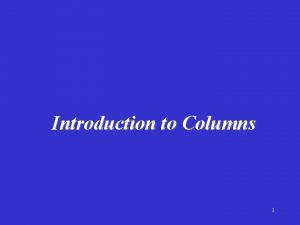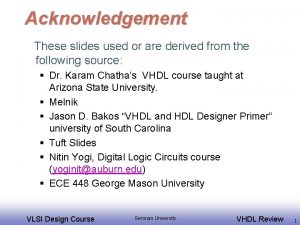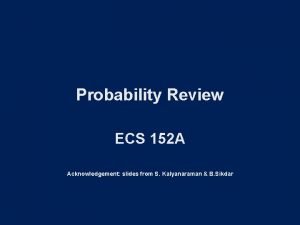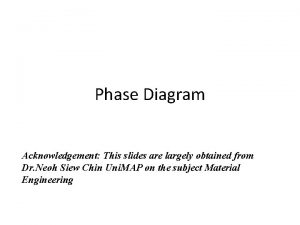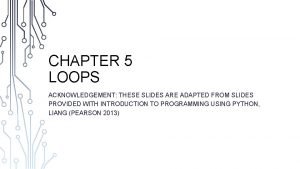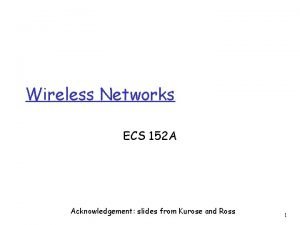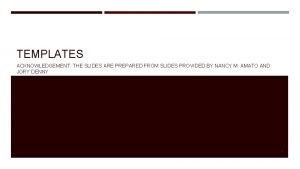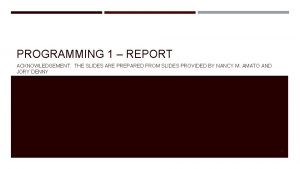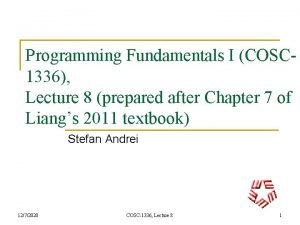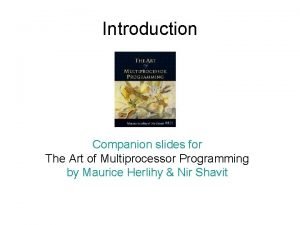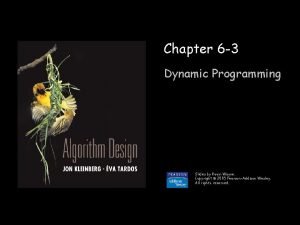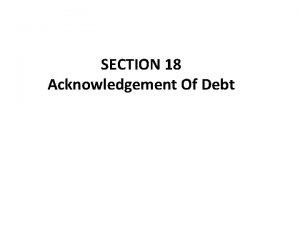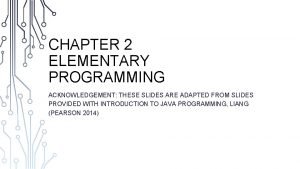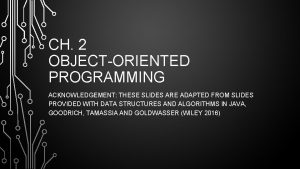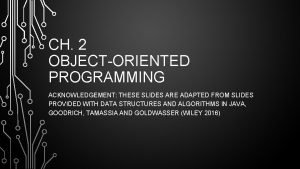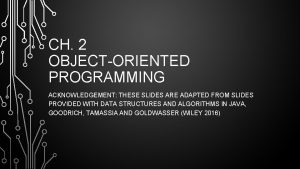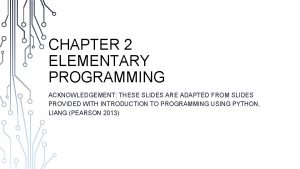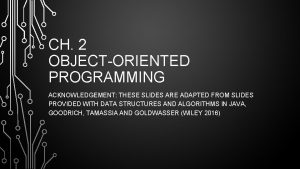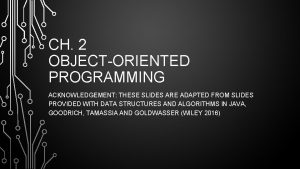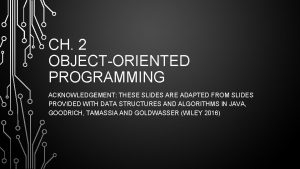PROGRAMMING 1 REPORT ACKNOWLEDGEMENT THE SLIDES ARE PREPARED
















- Slides: 16

PROGRAMMING 1 – REPORT ACKNOWLEDGEMENT: THE SLIDES ARE PREPARED FROM SLIDES PROVIDED BY NANCY M. AMATO AND JORY DENNY 1

SECTIONS IN YOUR REPORT Introduction Implementation details Theoretical analysis Experimental setup Results and Discussion Conclusion 2

EXAMPLE PROBLEM Sum of numbers stored in a vector 3

INTRODUCTION Problem statement Summary of what you learnt through this assignment Summary of results you found Comment on any comparison result and your inference (ie. , which is the best in which scenario). 4

INTRODUCTION Problem statement Summary of what you learnt through this assignment Summary of results you found Comment on any comparison result and your inference (ie. , which is the best in which scenario). “In this assignment, we study the addition of numbers stored in a vector”… “While doing the assignment, I learnt how to use iterators”…. “ The experiments show that adding numbers stored in vector takes O(n) time, where n is the number of elements in the vector. ”…. 5

IMPLEMENTATION DETAILS Details about the containers and functions you implemented Containers: What’s the underlying data structure for the continer Functions: Major functions especially ones directly used in experiments or related to them. Your thoughts and progress 6

IMPLEMENTATION DETAILS Details about the containers and functions you implemented Containers: What’s the underlying data structure for the continer Functions: Major functions especially ones directly used in experiments or related to them. “I first constructed a vector to store all the numbers. Then I implemented the sum of all the numbers stored in the vector. The function takes vector as input and returns the sum as result. …. ” Your thoughts and progress 7

THEORETICAL ANALYSIS Discuss about the time complexity of the functions you are about to analyze in the experiments. Comment on the justification for the complexity 8

THEORETICAL ANALYSIS Discuss about the time complexity of the functions you are about to analyze in the experiments. Comment on the justification for the complexity “ In theory, adding elements stored in the vector requires traversing through the vector making it an O(n) operation”. 9

EXPERIMENTAL SETUP Machine specification: OS, RAM, etc. (only if you are using a machine other than linux. cse. tamu. edu) Input sizes you conducted your experiments Any parameters you set 10

EXPERIMENTAL SETUP Machine specification: OS, RAM, etc. (only if you are using a machine other than linux. cse. tamu. edu) Input sizes you conducted your experiments Any parameters you set (eg. , increment size in “linux. cse. tamu. edu” … “ Input sizes used in the experiments: 2^1, 2^2 , …, 2^23” incremental strategy) 11

RESULTS AND DISCUSSION Plot the experimental data (ie. , mostly time) For comparison plot, you can use a single plot with different line legends Discuss what you infer from the plot General trends shown in the plots Any anomalies you observe and try to find a reason for it. Big Oh constants from Big Oh plots 12

RESULTS AND DISCUSSION TOTAL TIME Plot the experimental data (ie. , mostly time) For comparison plot, you can use a Time single plot with different line legends Discuss what you infer from the plot General trends shown in the plots Any anomalies you observe and try to find a reason for it. 200 180 160 140 120 100 80 60 40 20 0 2 4 8 Size 16 64 Big Oh constants from Big Oh plots “In the above plot, we plot the total time (y-axis) taken to calculate the sum of elements in a vector of varied sizes (x-axis). As shown in the 13 plot, the calculation of sum of elements stored in vector shows a linear trend i. e. , O(n)…. ”

AVERAGE TIME For functions like push_back, we compute the total time for n push operations While plotting, we plot the average time instead of total time with respect to varying size Average time, i. e. , (Total Time /Total Size) vs. Total Size 14

BIG OH CONSTANTS Actual or experimental time f(n) Big oh complexity: O(g(n)), c*g(n) > f(n) for n>n 0 Big Oh constants to find : c, n 0 Plot (Average Time/Theoretical Time) (y-axis) vs. Size(x-axis) c = where in y-axis levels and becomes || to x-axis n 0 = where in x-axis, the line becomes || to x-axis 15

CONCLUSION Summary of results you found Summary of inference you drawn Your thought (if any) about what you learnt and others. 16
 Mikael ferm
Mikael ferm Acknowledgement ppt slides
Acknowledgement ppt slides Acknowledgment slide
Acknowledgment slide Acknowledgement slides
Acknowledgement slides Acknowledgement slides
Acknowledgement slides Acknowledgement slides
Acknowledgement slides Acknowledgement slides
Acknowledgement slides Acknowledgement slides
Acknowledgement slides Acknowledgement slides
Acknowledgement slides Acknowledgement slides
Acknowledgement slides Prepared programming
Prepared programming Prepared programming
Prepared programming A small child slides down the four frictionless slides
A small child slides down the four frictionless slides A small child slides down the four frictionless slides
A small child slides down the four frictionless slides Class counter
Class counter Dynamic programming slides
Dynamic programming slides Book report presentation powerpoint
Book report presentation powerpoint

